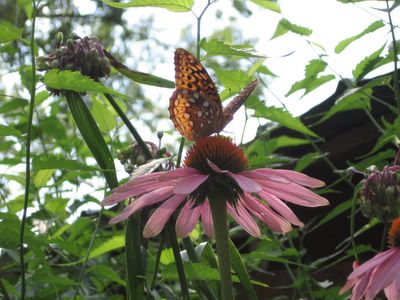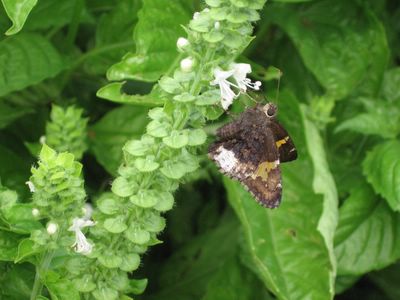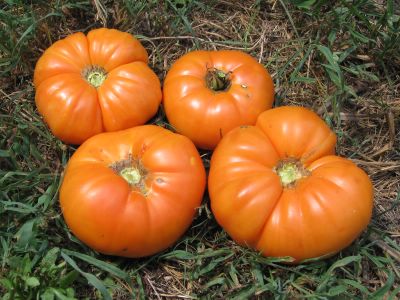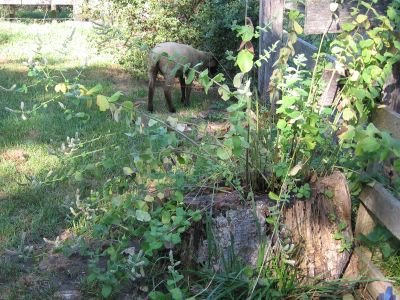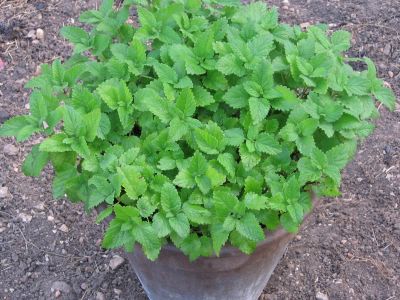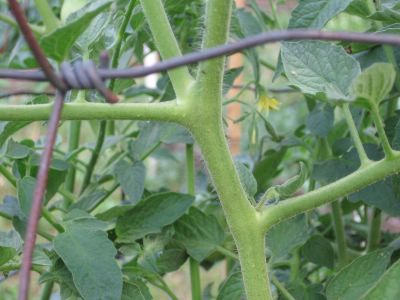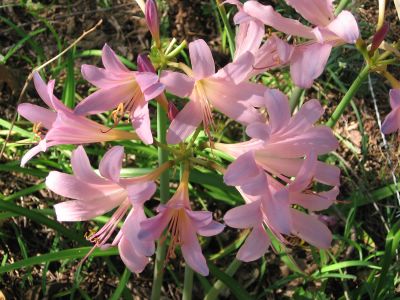
Realization Of The Day:
I've had this blog for nearly six months, and I'm still terrible at keeping gardening records.
Yesterday afternoon found me in the garden happily prepping beds, yanking up weeds, and scattering all sorts of seeds. There was a lot I wanted to accomplish, and I jumped into my work armed with everything I would need: gloves, hoe, Oriental garden tool, an ambitiously large pile of seed packets, the Environmentally Friendly Weed Eater (it's at that point again where there are now more weeds than food in the garden, so the threat of devistation to edible plants is low), and my handy dandy clipboard sporting a fresh piece of paper and one of my favorite pens so I could write down what seeds I started where as soon as I had planted them.
The above photo was taken at the end of my very productive gardening session. I don't think I have to ask you what is missing from this picture. If you had no idea that you'd been taking gardening advice from someone who is somewhat of a scatterbrain (and flat out lousy when it comes to writing important things down), consider yourself warned.
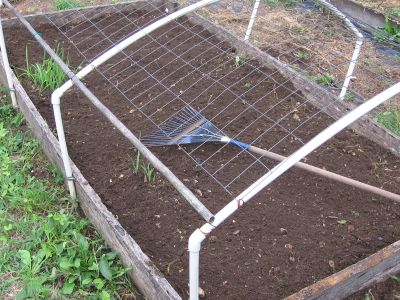
Super Salads Sprouting Up Here Soon (I Hope)
The good news is that my memory is not 100% shot yet, so I do remember some of what I did--and where I did it. For instance, I emptied the contents of pretty much every packet of lettuce seeds in my posession onto one of the mini greenhouse beds. (This would be the one that hasn't been swallowed up and surrounded by sprawling volunteer lemon cucumbers. Now don't get me wrong--I am definitely not complaining. I have been pining for cucumbers in the garden for months, and things that pop up and thrive without my having to do anything but water them are by far my favorite kind of plants. But they just keep spreading, and it's getting a tiny bit scary over there.)
I admit I may have been wee bit heavy handed, but as I sprinkled I reminded myself that the seeds probably wouldn't be any good next year. And sometimes letuce seeds just look so darn tiny and the bed looks so big. So how many seeds did I plant? Let's just say that if I get 150% germination rate I did in last spring's lettuce bed (which I let go to seed in the hopes of having an effortless fall crop, but not knowing of course that the lemon cucumbers would obliterate any chance of that happening--plus, um, I think Cary may have nibbled off most of the seed heads anyway), that 4-foot by 8-foot bed should soon be home to several thousand lettuce plants.
This ought to be interesting. Especially since, although I know all the varieties of seeds I sowed, during the planting process they somehow managed to jump out of their specified little sections of soil and mingle with one another. Not a problem. I simply decided to hell with identification and that this will be my new signature mesclun mix.
After I realized that any possiblity of keeping track of the dfferent lettuces had already been obliterated, I decided to try something new. Lettuce seeds barely need to be covered with soil. In fact, burying them (and any seeds in general) too deep is often the reason they don't sprout. Instead of lightly sprinkling compost over the seeds with a shovel or carefully running my hands over the top of the bed to mix the seeds into the soil like I usually do, I decided to pull out my trusty leaf rake and simply rake the entire plot. I have actually done this before with a rock rake, and I don't know why I never thought of using the leaf rake instead because it did a much better job. Or at least it seemed to. I guess I'll find out soon.
Here, for the record (see, I'm trying!) are the varieties of lettuce I planted:
--Petite Rouge, 2006 Baker Creek Heirloom Seeds (This was a real winner last spring; click here to see a photo and here to read about why I loved it so much.)
--Red Romaine Organic, old seeds from BC
--Big Boston, 2005 BC
--Gentilina, 2006 BC
--Jericho, 2006 Pinetree Garden Seeds, "A bolt resistant crisp and sweet cos type lettuce, 60 days." (I'll buy any variety that claims to be heat tolerant and bolt resistant as our spring temperatures can literally go from the 60sF to the 90s overnight. I do not recall a single April in Missouri when we didn't have at least one day above 90F, and even that short burst of heat can turn your lettuce bitter and send it bolting toward the sky.)
--Plato II, 2006 PT, "Slightly savoyed meaty leaves. Sweet flavor. Slow to bolt. 53 days." (I have no idea what this lettuce looks or tastes like, but I know I've been ordering packets of it for years--please reread above paragraphs if this doesn't seem possible.)
--Winter Density, 2006 PT, "Romaine type. Slow to bolt. 28-54 days."
--Buttercrunch, 2006 PT, "Bibb type. Loose head. Dark green leaves. Slow to bolt. 53 days." (I am crazy about all kinds of lettuce, but if I were forced to choose a favorite type it would have to be buttercrunch. There is a smaller variety I often grow called Tom Thumb that is absolutely adorable--perfect for gourmets and those short on space.)
Like I said, I got a little carried away with the lettuce. If you're interested in growing some lettuce of your own this fall, I invite you to read my article called "Sublime Salads For Those Who Are Short (On Time, Space, & Sunlight)" if you haven't already.






